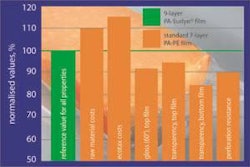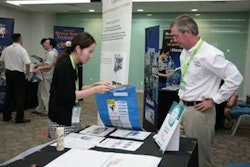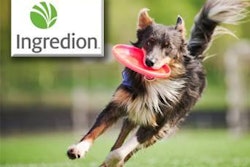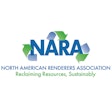Consumers and the media say they want petfoods that are fresh, natural, inexpensive, perfectly formed and appealing to the eye, taste great, and are constantly available to the market regardless of season or supply. The retailers and distributors want petfoods that will last on the shelf for years, appeal to consumers, are encased in beautiful packaging and don’t degrade or get buggy. Petfoods, by nature, are perishable and don’t often fit these demands. So, this combination of “wants” is unreasonable and unnatural unless we resort to food processing innovations and specialized food additives; however, doing so gets criticized.
Things like artificial colors, preservatives and synthetic or modified ingredients can help us achieve these targets, but many manufacturers have elected not to use them in order to avoid any hint of controversy. Propylene glycol (PG) is an ingredient that gets caught in this category of maligned solutions. This food additive is found in many semi-moist and soft-moist dog foods and treats where it helps extend shelf life and stability by acting as a humectant. Does this functional, albeit synthetic, ingredient deserve to be a subject of controversy for petfood manufacturers?
Propylene glycol is a polyol (i.e., polyalcohol) that also identified as 1,2-propanediol (IUPAC) by some references. It is a clear, colorless, near odorless viscous liquid which is lightly sweet to the taste, soluble in water, acetone and chloroform, and most importantly hygroscopic. In other words, it binds water from the atmosphere. Propylene glycol was first produced in 1859 by Wurtz and was first commercialized in 1931. In the 1930’s, DuPont produced propylene glycol as a co-product from the hydrogenation of coconut oil where it was first used as a substitute for glycerol in pharmaceutical applications.
Today it has a wide range of uses, some industrial and some consumable, ranging from solvent to stabilizer, preservative, energy source, humectant, dust control, wetting agent and freeze point modifier. In consumer products, PG is widely used in cosmetics and personal toiletry items like shaving cream and shampoos, it helps carry various flavors and is a common solvent used to deliver pharmaceuticals.
While it has natural origins, today the production of PG starts with propylene oxide, a petroleum derivative. The propylene oxide is non-catalytically oxidized and then refined via distillation into a virtually pure (99%) product. The ingredient is sold as “technical grade” or as USP grade, the latter of which is most commonly used in petfood production. Propylene glycol (C3H8O2) is a relatively simple molecule with some tremendous flexibility resulting from the placement of the hydroxyl (-OH) groups on its 3 carbon backbone. It can be described as a di-functional alcohol with a primary and secondary hydroxyl group.
The secondary hydroxyl group is what separates it from ethylene glycol (which has two primary hydroxyl groups). This is where some real confusion comes into the picture. Consumers often mistake the anti-freeze they use in their cars (ethylene glycol) with propylene glycol. True, they have some similarities; however, the placement of that one hydroxyl group makes all the difference.
To further the confusion, PG can be used as an antifreeze and coolant, even a deicer for airplanes. However, propylene glycol is one of the few glycols that are considered safe for consumption by humans and certain animals. For example, the acute LD50 for rats is 20 g/kg bodyweight, lower than the LD50 for sucrose (table sugar; 29.7 g/kg bw). For dogs, the LD50 is 9 mL/kg bw (IPCS Monograph 443) and 22 g/kg bw, according to Sax (1989). In other words, it is safe at levels well above what you would ever want to use in a product.
Humectants are a key component in many foods. They help control the water activity (target is less than 0.65) and thereby spoilage in intermediate moisture or semi-moist foods. These compounds are often included at levels of 10%–18% in semi-moist petfoods (Rokey, 2003) where they are often added along with water and flour into the pre-conditioner to assure uniform distribution and a good mix of all the constituents.
Propylene glycol is seldom the only humectant, making up only a portion of the mix. It is most commonly included at 2% of the formula with the remainder made up of other humectants like cane sugar, molasses, glycerin and others. However, there are patents for treat products that call for 8% to 50% by weight of polyols, including propylene glycol (US patent application 12/694,823), so it can clearly serve a purpose at higher levels. Besides its benefit to controlling water activity, there are anecdotal reports that it may also help control mite infestation in these foods.
From a regulatory perspective, propylene glycol is permitted under 21CFR184.1666 for use in petfood and animal feeds. It has been demonstrated to be well tolerated at levels up to ~8% without adverse effects in a two-year controlled study with dogs (Weil et al., 1971). But for cats, PG was shown at higher levels (12% of the diet) to increase the incidence of Heinz body anemia and destruction of red blood cells in a matter of weeks (Christopher et al., 1989). This prompted the US Food and Drug Administration (FDA) in 1996 to modify the previous ruling and exclude cat foods (21CFR582.1666) from use of this ingredient.
In more recent years, there has been some concern regarding propylene glycol as a compound potentially involved in the spate of Fanconi syndrome in dogs linked with chicken jerky treat consumption. However, nothing definitive has come from that line of reasoning. There was also a recent recall (July 27, 2012) in which Arthur Dogswell LLC VitaKitty Chicken Breast with Flaxseed and Vitamins, a cat treat, contained significant levels of propylene glycol. No harm was noted from the recall; rather, it was recalled due to an inappropriate use of the ingredient in regards to the 1996 ruling for cat foods.
So, thus far it appears that most of the fear and confusion regarding the use of small amounts of propylene glycol in dog foods and treats is unfounded. While this line of reasoning is unlikely to sway the most ardent critics, the more reasonable pet owner and petfood manufacturer can be rest assured there is nothing inherently harmful with propylene glycol and that it plays a functional role toward meeting the ideals of a quality shelf-stable semi-moist product.















